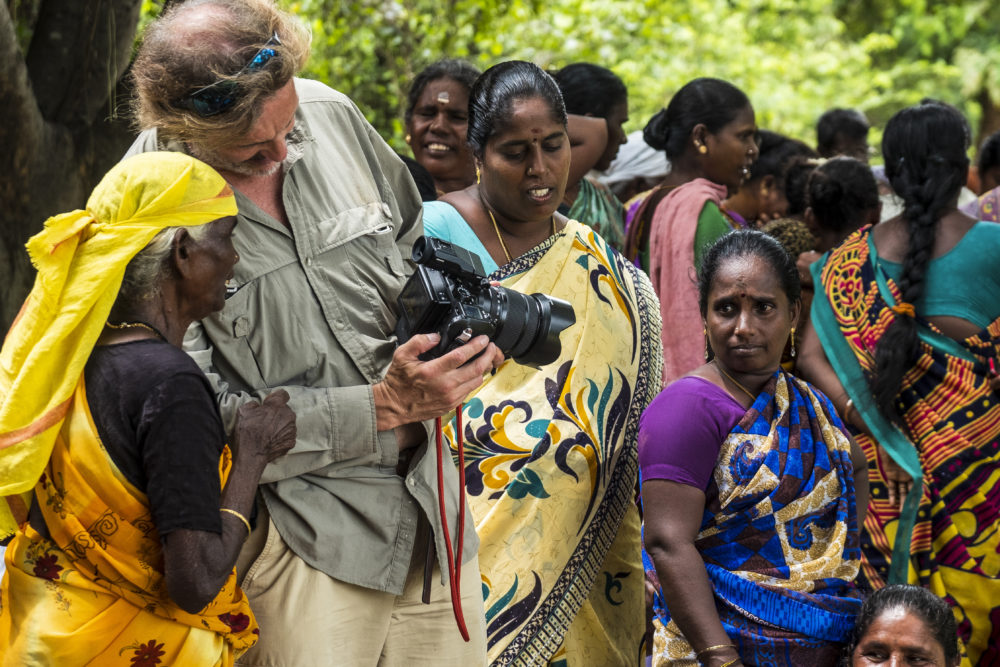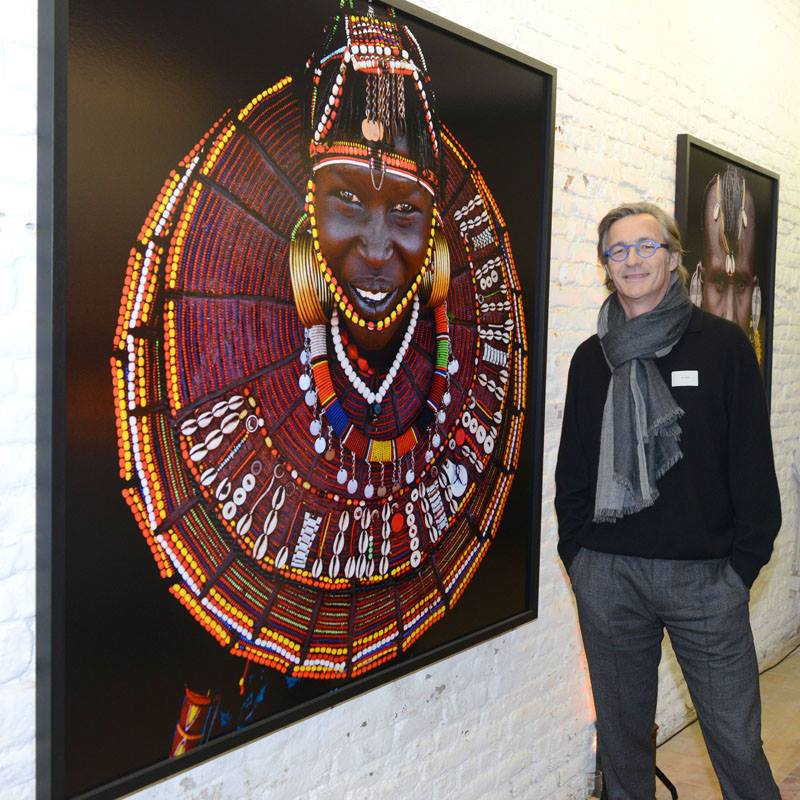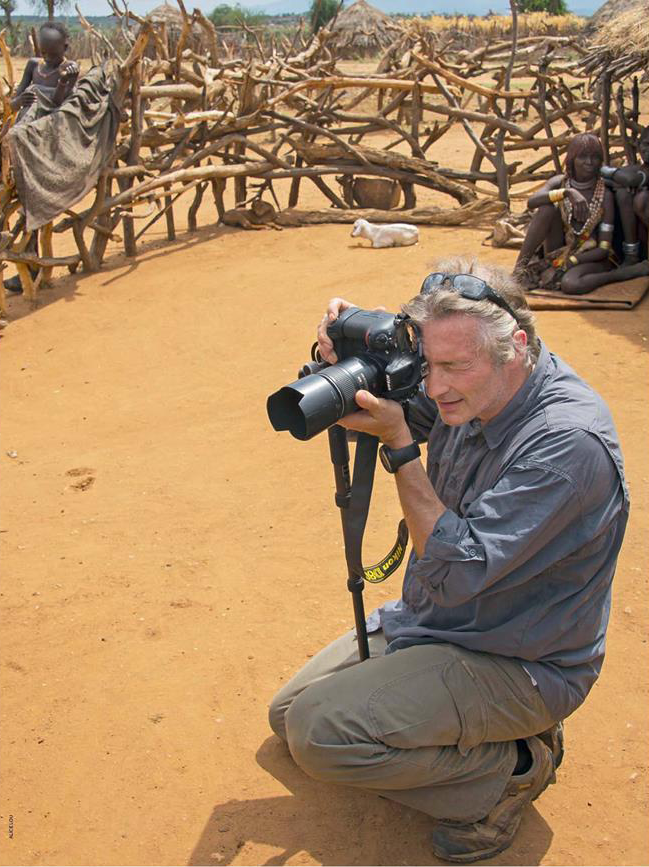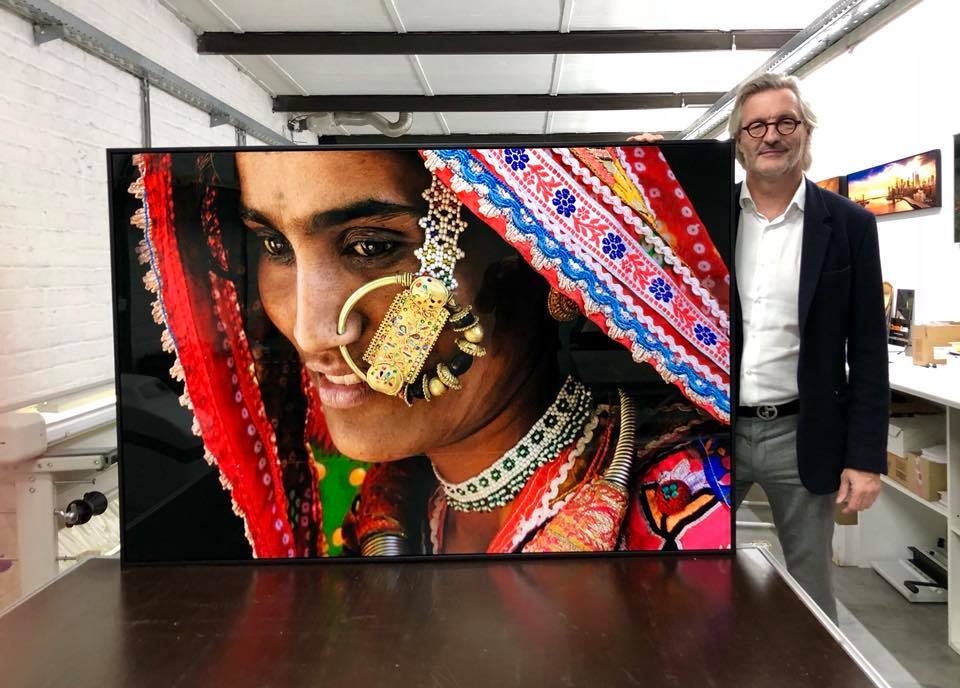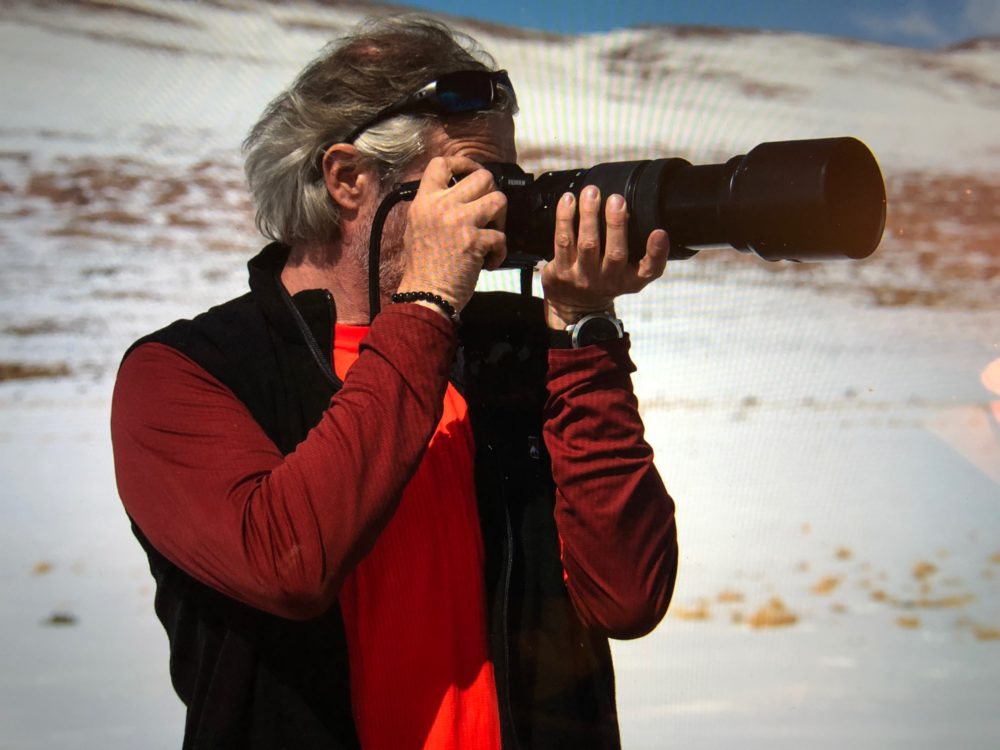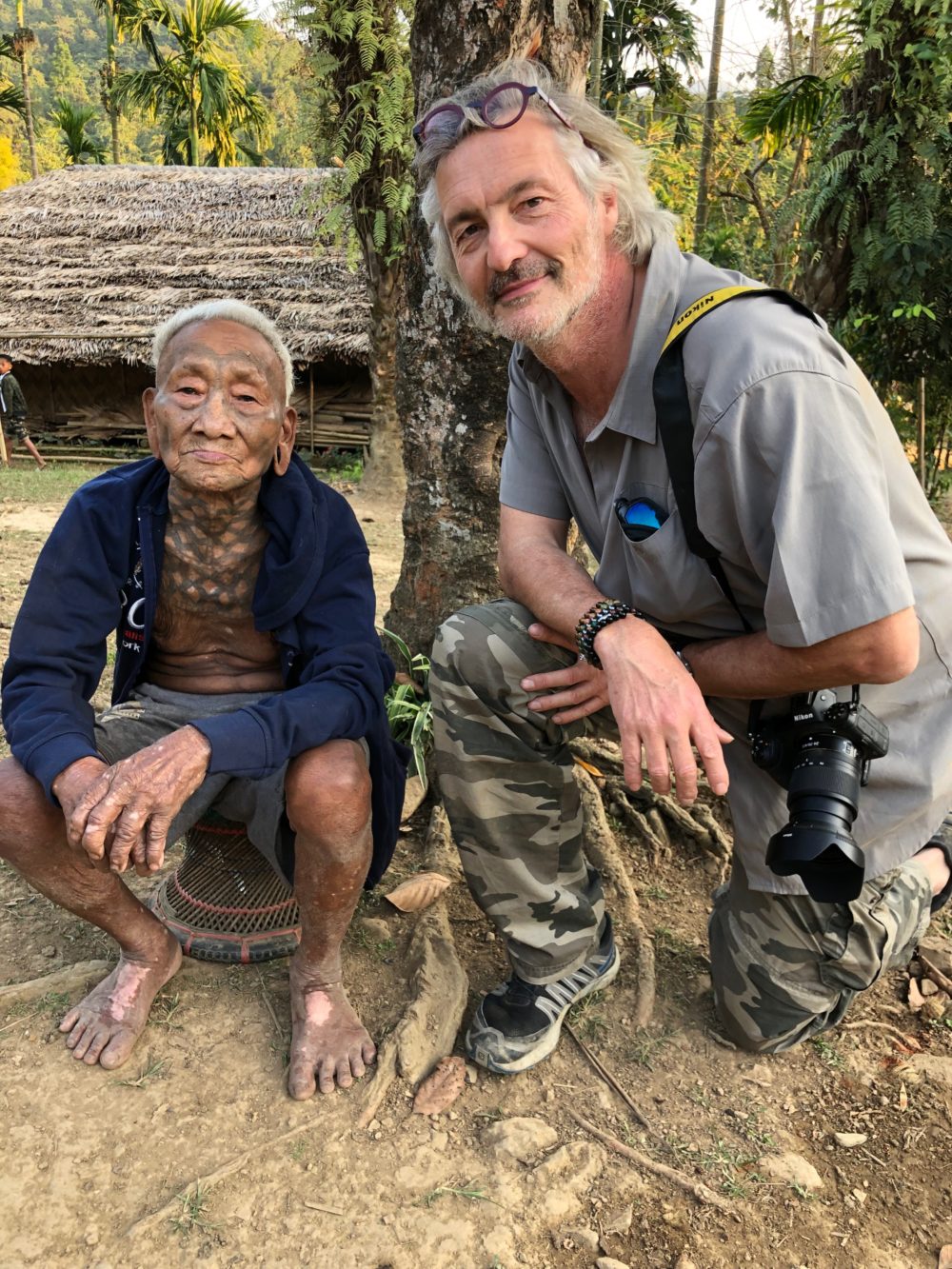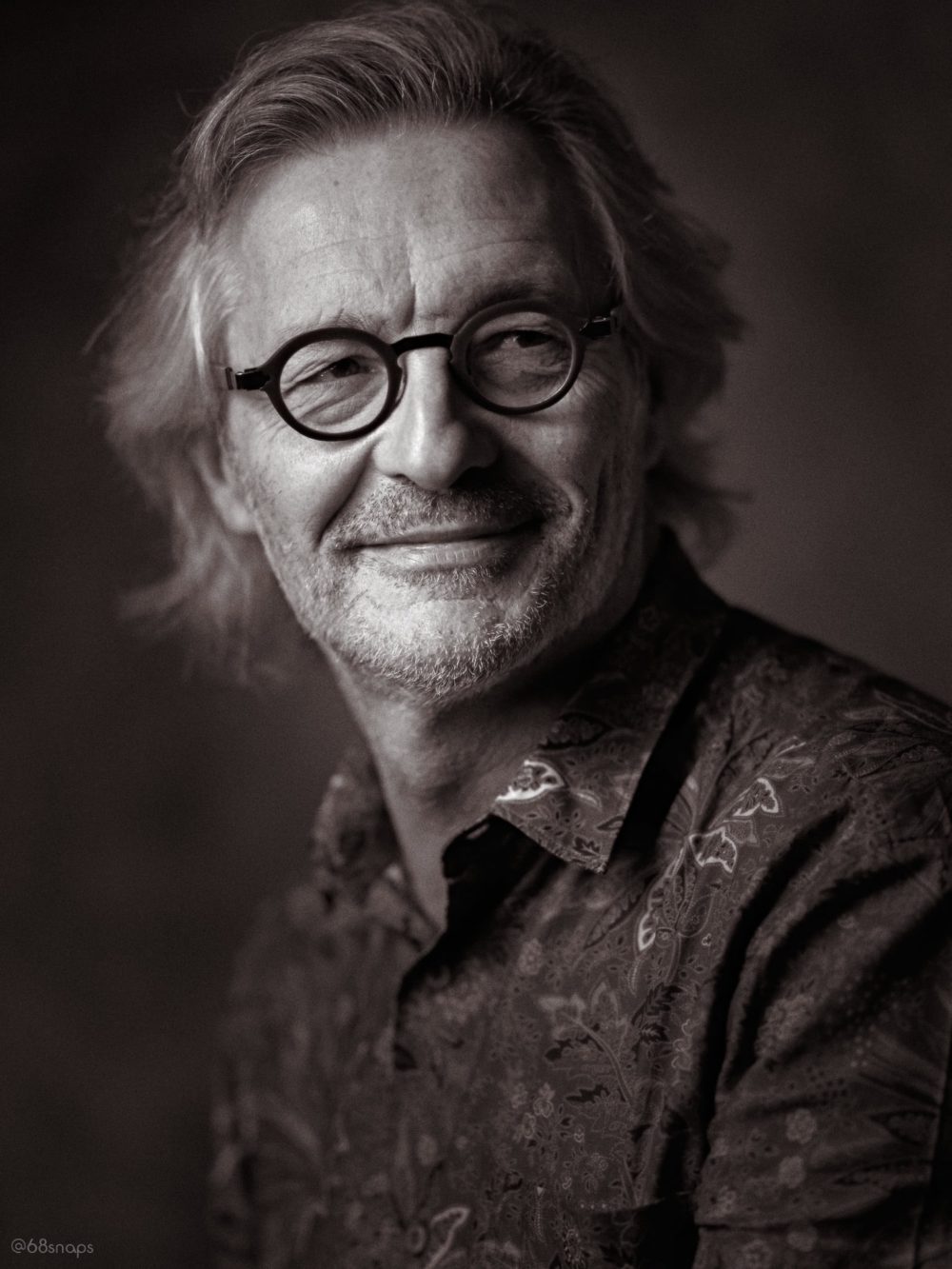Benoît Feron is a Belgian photographer. He lives in Brussels.
His work is nourished by a deep love for traveling and exploring the planet, its people and its wonders. With a true appeal for the Horn of Africa, its unbeaten light, endless nature, but first of all for the great diversity and the beauty of its people, whom he immortalized in his book “Portraits of the Rift”.
The attraction for this region led him to undertake a large project on the Great Rift Valley, a place on earth dubbed “the Mankind of Humanity. It spans from Djibouti to the Northern part of Tanzania, through Ethiopia and Kenya, into some of the most remote places in East Africa. He captured innumerable images of its people and tribes. First with portraits but also with a large work on the human skin through the ritual of body painting, scarification or jewelry. In addition, the photographer captured its landscapes, lakes and volcanos with a focus on graphism and abstractions of this impressive nature.
Besides his work on the Rift Valley, Benoît is also exploring the diversity of people throughout the world where he tries to capture portraits in the same spirit as in his work on the tribes of the Rift Valley.
This led him o.a. to India where he photographed very colorful celebrations like the Holi Festival or other countries in different continents like Papua New Guinea or Peru.
In addition, he also focuses on specific themes, like the abstraction in the nature in his serie “Elements, Terra Abstracta”. The latter serie led him to photograph the ice in Antarctica, Arctic, Patagonia or Iceland, as well the incredible nature of Yellowstone in the winter. He has also photographed many lakes and landscapes from the air like the soda lakes Natron and Magadi in Tanzania and Kenya or the Atacama desert in Chili.
His artistic approach is strongly inspired by a search for aestheticism, for original framing and for the emotion expressed by the people photographed.
This approach is criticized by some but, as said by the great photographer Sebastiao Salgado, « everywhere people are beautiful, everywhere they want to be represented with dignity ».
Behind this aesthetic approach, the goal of Benoît Feron in this work is also to increase people awareness on the extreme diversity of the people. On the identity of many groups or tribes and of their tremendous creativity, which are materialized in their clothes, their body art and their jewels. A view so much remote from the globalized world, wherein the focus has been increasingly on the West.
What makes Benoît‘s work unique is the precision of his framing and his attraction for sharpness and details, found in his portraits but also in his work on skins, jewels or landscapes. His work is also mastering the sense and harmony of colours, although Benoît does not neglect black and white work from time to time.
Benoît Feron deeply cares about the future of the people, places and wildlife he has photographed, and he speaks about them with passion. He supports several humanitarian projects or charities, including En Avant les Enfants and Comequi (active in Kivu, Congo), Fondation Fournier Majorie, Foetus for life or the Association Tchendukua.
He is the author of several books and has been widely exhibited in Belgium and France. He held in 2014 a major exhibition in Brussels, «Portraits of the Rift», which was acclaimed by the press. In 2007 he won the best photography award delivered at the occasion of the exhibition l’Art pour l’Accueil held at the Xavier Hufkens gallery. In 2014, a jury chaired by Belgium Sotheby’s chairman granted the artist the photography prize in another collective exhibition in Brussels organized by Spot-U-Art.
In November 2016, Benoît was invited with 17 other photographers, including Ian Arthus-Bertrand and Sebastiao Salgado, to exhibit his work in the Festival Loving Earth organized by Hangar H 18 in Brussels.
Benoît Feron est un photographe belge résidant à Bruxelles.
Son travail est nourri par un amour profond du voyage et de l’exploration de la planète, de ses peuples et de ses merveilles. Avec un intérêt tout particulier pour la Corne de l’Afrique, ses lumières saisissantes et sa nature infinie mais avant tout la grande diversité et l’infinie beauté de ses peuples, dont il a saisi quantité de portraits mais aussi des peaux, du body painting, des scarifications ou des ornements. Cette passion est immortalisée dans son livre « Portraits du Rift ».
L’attrait pour cette région l’a conduit à entreprendre un vaste projet sur la grande Vallée du Rift, berceau de l’humanité. Il y a réalisé d’innombrables images de Djibouti au Nord de la Tanzanie, à travers l’Éthiopie et le Kenya et jusqu’à des contrées parmi les plus reculées de l’Afrique de l’Est. Outre ses peuples, le photographe y a aussi capturé les paysages, les lacs et les volcans, en mettant l’accent sur le graphisme et les abstractions de cette nature impressionnante.
Le travail de Benoît ne s’arrête pas à la Vallée du Rift mais explore également la diversité de la planète et des peuples à travers le monde. Diversité qu’il aborde d’abord par l’angle du portrait dans le même esprit que pour son travail sur la Vallée du Rift.
Cette soif de diversité l’a amené en Inde parmi les célébrations du Festival Holi et ses multiples couleurs, ainsi que dans des pays sur d’autres continents tels que la Papouasie-Nouvelle-Guinée ou le Pérou.
Outre le portrait et les corps, Benoît se concentre également sur d’autres thèmes spécifiques comme l’abstraction naturelle dans sa série « Elements, Terra Abstracta ». Cette dernière série l’a amené à photographier la glace en Antarctique, en Arctique, en Patagonie ou en Islande, ainsi que l’incroyable nature du Yellowstone en hiver. Il a également photographié de nombreux lacs et paysages vus du ciel, comme les lacs Natron et Magadi en Tanzanie et au Kenya ou encore le désert d’Atacama au Chili.
Cette approche « esthétique » est critiquée par certains mais, comme le dit le grand photographe Sebastiao Salgado, «les gens sont beaux partout et partout ils veulent être représentés avec dignité».
A travers cette approche esthétique, Benoît Feron tient aussi à sensibiliser les gens à l’extrême diversité des populations. Sur l’identité de nombreux groupes et tribus ainsi que leur formidable créativité. Une vision tellement éloignée du monde globalisé, où l’accent est tourné vers l’Occident. Sa nouvelle exposition ETHNICITY se concentre sur cette diversité.
Ce qui rend l’œuvre de Benoît unique, ce sont la précision de ses cadrages et son attrait pour le piqué et le détail, qu’on retrouve tant dans ses portraits que dans ses images de peaux, de bijoux ou de paysages. Un travail aussi caractérisé par une grande maîtrise de la couleur, même si Benoît ne néglige pas non plus le noir et blanc.
Benoît Feron se soucie profondément de l’avenir des gens, des lieux et de la faune qu’il a photographiés, et il en parle avec passion. Il soutient plusieurs projets humanitaires ou caritatifs, dont En Avant les Enfants et Comequi (en activité au Kivu, au Congo), la Fondation Fournier Majorie, Foetus for life ou l’Association Tchendukua.
Il est l’auteur de plusieurs livres et a été largement exposé en Belgique et en France. Il a organisé en 2014 une grande exposition à Bruxelles, accueillie très positivement par la presse, «Portraits du Rift». En 2007, il remporte le prix de la meilleure photographie délivré à l’occasion de l’exposition l’Art pour l’Accueil à la galerie Xavier Hufkens. En 2014, un jury présidé par le président de Sotheby’s Belgium a décerné à l’artiste le prix de la photographie lors d’une autre exposition collective organisée à Bruxelles par Spot-U-Art.
En novembre 2016, Benoît a été invité avec 17 autres photographes, dont Ian Arthus-Bertrand et Sebastiao Salgado, à exposer son travail au Festival Loving Earth organisé par le Hangar H 18 à Bruxelles.
